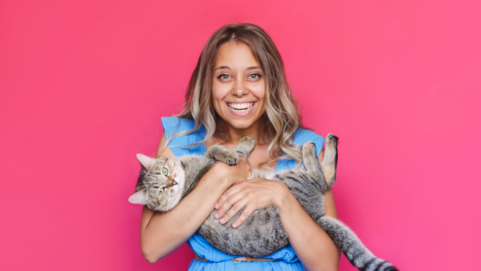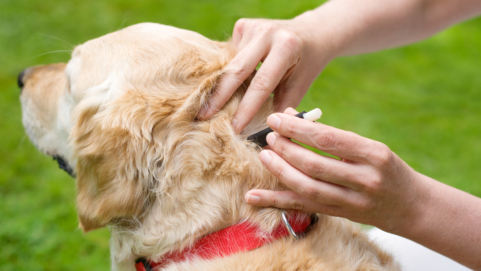Australia's most comprehensive pet survey shows nearly three quarters of Australian homes now have a pet
Australia’s longest and most comprehensive pet survey indicates that Australia’s pet ownership rate has continued to rise, with 73% of households across metropolitan, regional and remote Australia now home to one or more pets.
- #petpopulation
- #petreport
- #petsinaustralia
- Media Releases
- Companion Animals
- 18 September 2025

Australia's most comprehensive pet survey shows nearly three quarters of Australian homes now have a pet
- 73% of households across metropolitan, regional and remote Australia are now home to one or more pets.
- An estimated 31.6 million pets are now calling home to around 7.7 million households across Australia.
- 86% pet owners say their pet has a positive impact on their life, noting mental and physical health as key positives.
- Australians are estimated to be spending over $21 billion annually to keep our pets fed, healthy and well-accessorised.
- 12% of pet owners required financial assistance for veterinary care for their pet.
- In the face of turbulent times and a cost-of-living crisis, pets have remained a reliable source of love and happiness in the lives of Australians, with 86% of owners saying their pets have positively impacted their lives.
Canberra, ACT –Australia’s longest and most comprehensive pet survey indicates that Australia’s pet ownership rate has continued to rise, with 73% of households across metropolitan, regional and remote Australia now home to one or more pets.
Animal Medicines Australia’s latest Pets in Australia study found an estimated 31.6 million pets are now calling 7.7 million Australian households home.
Dogs remain the most popular pet, with half of Australian households having at least one dog¹ (49%, up from 40% in 2019 and in line with 48% in 2022) equating to an estimated 7.4 million dogs nationwide. Cats continue to be Australia’s second most popular pet², with 34% of households having at least one cat (up from 27% in 2019 and in line with 33% in 2022). Consistent with previous AMA surveys, around one in ten Australian households have fish and/or birds, while the numbers of other pets have remained largely steady³.
For many pet owners, typical reasons for getting a pet include companionship, rescuing animals, relaxation and mental health, with 86% saying their pet had a positive impact on their physical and mental wellbeing. Breed-specific reasons also remain a common consideration when acquiring a pet, including certain animals being lower maintenance or of a more suitable temperament or size.
Despite the growth in ownership, there are challenges. Ongoing cost is the main barrier to pet ownership among those who would like a/another pet. One-quarter (26%) cite it as the main barrier, followed by lifestyle (21%), the responsibility of looking after pets or the initial cost of acquiring a pet (both 19%). This is not too dissimilar from 2022 findings, however ongoing cost as a barrier has jumped a significant 5 percentage points from 21%, potentially reflecting the increased cost of living pressure in Australia.
Australia’s pet owners are spending an estimated $21.3 billion on their pets each year, with food accounting for almost half the spend at $9.8 billion. This is followed by veterinary services ($1.9b), products and accessories ($1.4b), and pet insurance ($1.0b). Dog-owning households spent the most out of all pet owners, at an estimated $2,520 a year on average. By comparison, cat-owning households spent around $1,656 on their cats. Many pet owners are looking for ways to reduce their spending while maintaining product and service quality for animals in their care.
Around one in six cat and dog owners (cats 18% and dogs 14%) resorted to health-related sacrifices, including deferring veterinary check-ups and vaccinations or reducing or stopping medication.
“Delaying vaccinations can leave pets vulnerable to preventable diseases, while deferring regular check-ups can mean pet health issues are not identified at an early stage. Ensuring pets receive the right veterinary care is essential for their health and wellbeing,” Animal Medicines Australia’s Executive Director, Ben Stapley said.
As Australia went through a cost-of-living crisis, a surge in pet surrendering was occurring in parallel – with around one in four (23%) having surrendered their pet/s to family, friends or an animal shelter when they could no longer look after them.
Notably, those who have had to take out financial assistance to cover veterinary care are less likely to turn to their vet with pet-related questions⁴, and are more likely to consult alternatives such as social media sites, YouTube and Generative AI, in addition to animal-related TV shows and books⁵.
“These findings highlight the tough reality for many Australians who are feeling the strain of rising living costs and, in some cases, making the difficult decision to part with their pets. It underscores the importance of support services that can help people stay connected with their animals during challenging times – especially given the strong evidence of the mental health benefits that companion animals provide.
“To ensure that as many Australians as possible can access the myriad benefits associated with pet ownership, we seek a policy environment that facilitates and supports responsible pet ownership,” Mr Stapley said.
“This could be achieved by improving support for vulnerable pet owners, developing and implementing a program to support critical veterinary services for vulnerable people and their pets, or through greater national consistency in companion animal policy settings.
“We need to encourage informed and thoughtful decision-making by governments, policymakers and others when considering issues that impact Australia’s estimated 31.6 million pets in 7.7 million households,” Ben Stapley concluded.
Animal Medicines Australia thanks and acknowledges the Australian Veterinary Association, Pet Food Industry Association of Australia and the Pet Industry Association of Australia for contributing to this report.
Footnotes
1 – 49% – up from 40% in 2019 but on par with 48% in 2022
2 – 34% – up from 27% in 2019 and slightly higher than 33% in 2022
3 – Fish (11%) and/or birds (9%), while a very small minority own small mammals (3%), reptiles (3%) or other types of pets (1%)
4 – 33% vs. 55% among those who did not require financial assistance
5 – Social media sites (24%), YouTube (22%) and Generative AI (12%), animal-related TV shows (14%) ,books or libraries (11%).



